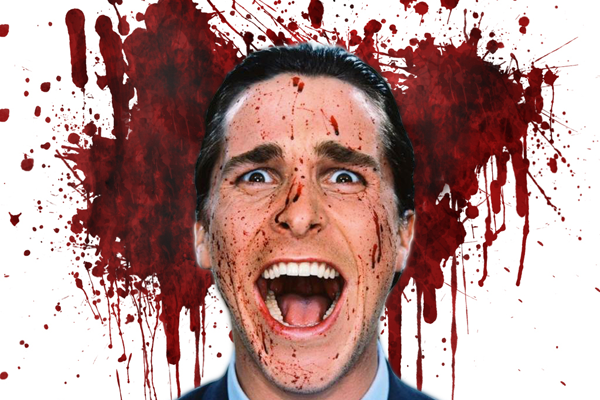American Psycho (2000)
Director: Mary Harron
Patrick Bateman is the consummate Wall Street yuppie, whose vacuous daily routine consists of grooming clients, interns and himself. His only interests are restaurants, his figure, and, in an assertion that falls on his insipid colleague’s deaf ears, “dissecting girls.” Bale, in a part that he claims was inspired by Tom Cruise, is simultaneously hilarious and horrifying, sinister and pathetic. He is perfectly cast as someone whose good looks cross into being just plain creepy; and age-appropriate, given the majority of serial killers are statistically white males in their 30s. Bale’s manic intensity in American Psycho is so perfect that the film ultimately launched his career, when most thought it would have ended it.
Despite the sadistic violence, Harron’s comedic tone is as consistent as Bateman’s unhinged smile, the laughs increasing with the body count. The easy combination of comedy and horror is probably best exemplified by his Huey Lewis monologue, delivered to an oblivious corporate victim, axe-in-hand (it has over half a million views on YouTube). Upon release, American censors found not Bateman’s graphic mutilation of women to be offensive, but rather the sex scenes – only by cutting 18 seconds of the latter did the film achieve an R16 rating. This decision in itself is more misogynistic than any of the film’s content.
If all this merely makes American Psycho sound like a pretentious horror film, then a viewing should dismiss such concerns. As that rare success, a “horror-comedy,” it explores the dangers of rampant vanity and competitiveness within the corporate environment. The late Roger Ebert encapsulated this best: “Most men are not chain-saw killers; they only act that way while doing business. ... Their sexual insecurity is manifested as business card envy.” Ultimately, though, the film is not about understanding Bateman or drawing comparisons between 80s materialism and sadistic violence. Rather, one enjoys the performance while also revolting at the spectacle.



